Princeton University Celebrates the Art of Science
In a new exhibition, the university showcases 43 images rooted in scientific research that force viewers to contemplate the definition of art
![]()

Starry, Starry Night, by Barry Jacobs and Casimir A. Fornal, Department of Psychology and Princeton Neuroscience Institute. Courtesy of the Princeton University Art of Science Competition.
Sometimes the connection between art and science is clear. When Barry Jacobs, a psychology professor at Princeton University, and Casimir Fornal, a research scholar, took a micrograph of a mouse’s hippocampus (shown above), they felt compelled to call it Starry, Starry Night, after the 1970s song by Don McLean about Vincent van Gogh. The dark, star-like bursts in the golden image are glial cells in the brain called astrocytes (“astro” meaning star in Greek).
A jury of photographers and scientists recently selected Starry, Starry Night and 42 other images for the 8th annual Art of Science exhibition at Princeton University. Each spring, the competition calls for Princeton students, faculty, staff and alumni to submit “images produced during the course of scientific research that have aesthetic merit.” This year, three winners selected by the jury, three people’s choice winners and 37 other works highlighted in the exhibition, currently on view at the Friend Center on Princeton’s campus, were chosen from an impressive lot of 170 entries hailing from 24 different university departments.
Worms and proteins, crystals and flames, even a compelling view of a fruit fly ovary are the subjects of the recent Art of Science images, which all in some way tie into this year’s theme: connections. “Some areas of research involve obvious ‘connections.’ Neural networks, for example, or the Internet. In other areas of research connections are more nuanced but just as valid. Fractal patterns in nature, the deterioration of architectural monuments due to the effects of acid rain, bridges, the wake that a jet of cool air generates as it passes through a hot flame, a qubit, the chemical signals than induce embryonic development,” according to the contest’s Web site.
In a statement released by the university, Adam Finkelstein, a computer science professor and one of the show’s organizers, expressed what he considers the strength of the Art of Science exhibition—its ability to create a new way of seeing for both artists and scientists. “At the same time,” said Finkelstein, “this striking imagery serves as a democratic window through which non-experts can appreciate the thrill of scientific discovery.”
Here is a selection from the exhibition:
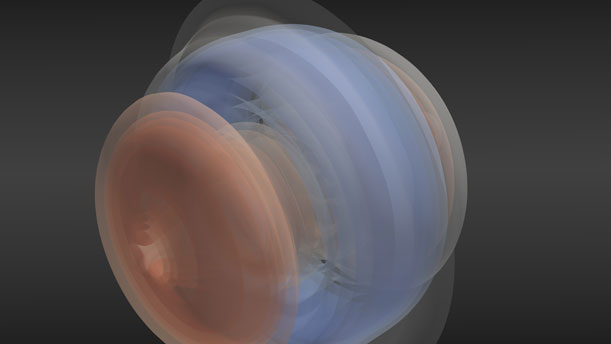
East-West, West-East, by Martin Jucker. This image, which the jury named first place, depicts the east-west (shown in blue) and west-east (shown in red) winds that move around the globe. Courtesy of Princeton University Art of Science Competition.
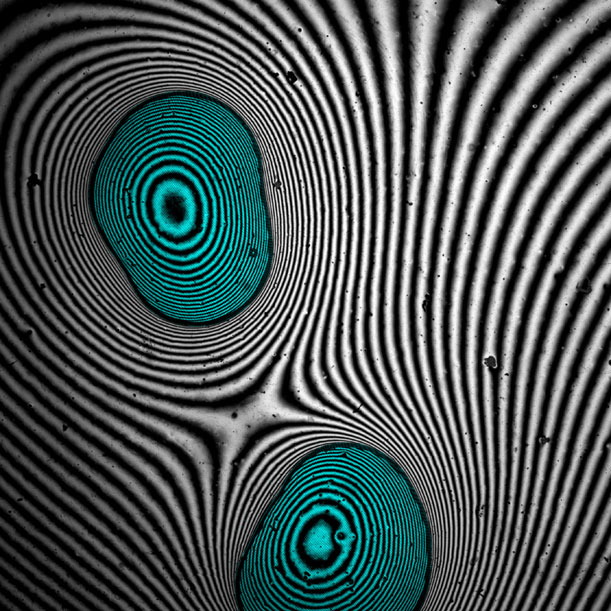
Bridging the Gap, by Jason Wexler and Howard A. Stone, Department of Mechanical and Aerospace Engineering. This image, which earned the People’s Second Place, shows how negative pressure forms inside two drops of liquid (in blue), when those drops are between two transparent solids and viewed from above. Courtesy of the Princeton University Art of Science Competition.
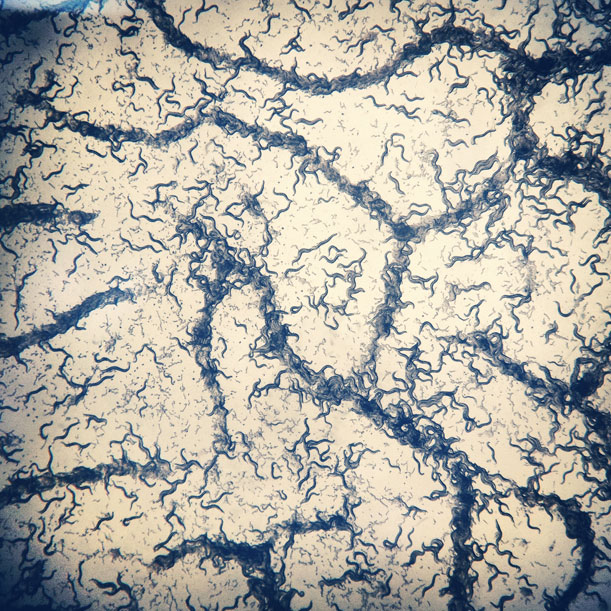
C. instagram, by Meredith Wright ’13, Department of Molecular Biology (Murphy Lab). Wright snapped this photograph of C. elegans worms on an agar plate by holding her cellphone up to the eyepiece of her microscope. She calls it C. instagram because of the interest it sparked when she shared it on social media. Courtesy of the Princeton University Art of Science Competition.
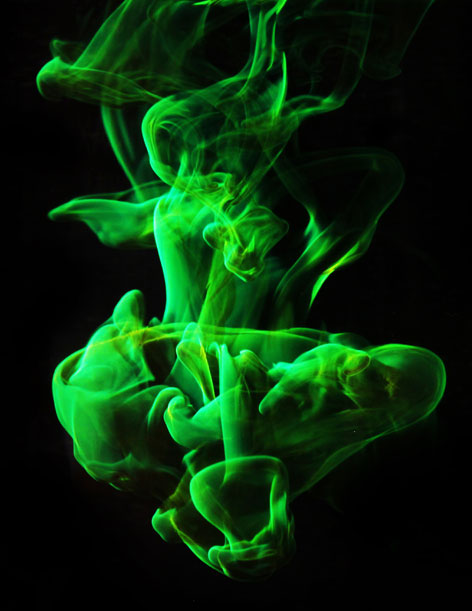
Merger and Acquisition, by Daniel Quinn, Brian Rosenberg, Amanda DeGiorgi and Alexander Smits, Department of Mechanical and Aerospace Engineering. This image shows what happens to a drop of dye when it passes through still water. Courtesy of the Princeton University Art of Science Competition.
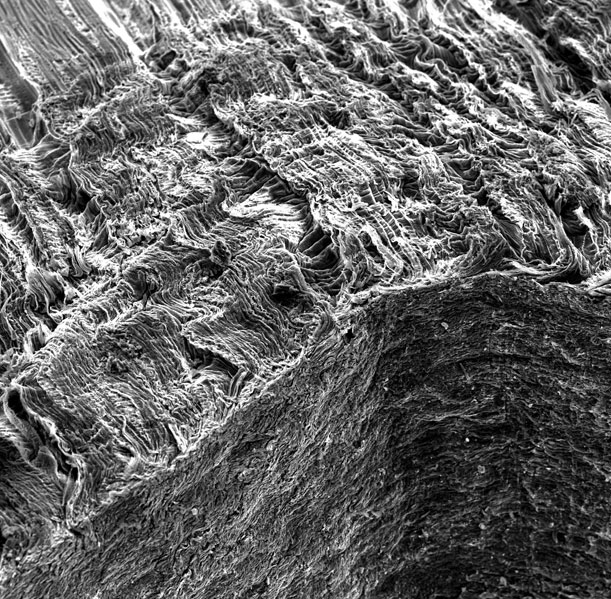
Crushed Birch, by Michael Kosk ’16, Woodrow Wilson School. The jury awarded this image of the cellular structure of a piece of birch second prize. Courtesy of Princeton University Art of Science Competition.
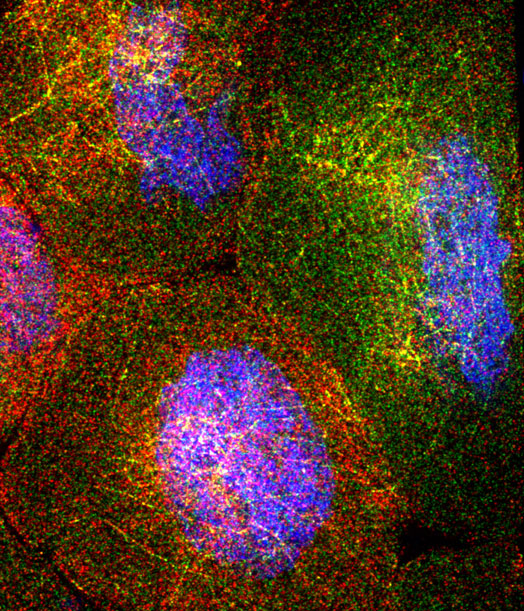
Messenger Meshwork, by Shawn C. Little, Kristina S. Sinsimer, Elizabeth R. Gavis and Eric F. Wieschaus, Department of Molecular Biology. Earning the People’s First Place, this image depicts four nurse cells in an egg chamber within a fruit fly’s ovary. Courtesy of the Princeton University Art of Science Competition.
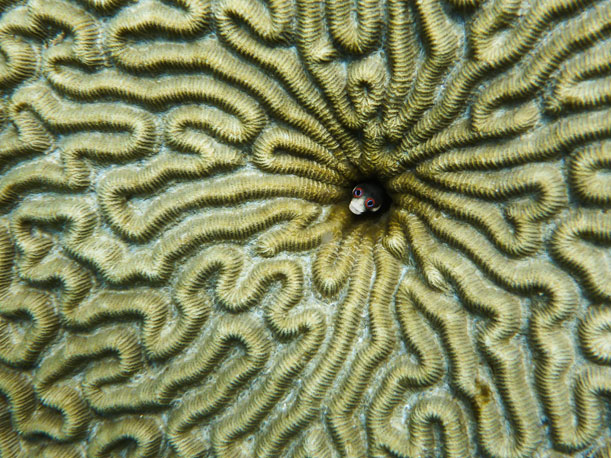
Maze Dweller, by Chhaya Werner ’14, Department of Ecology and Evolutionary Biology. A goby fish peers through coral. Courtesy of the Princeton University Art of Science Competition.
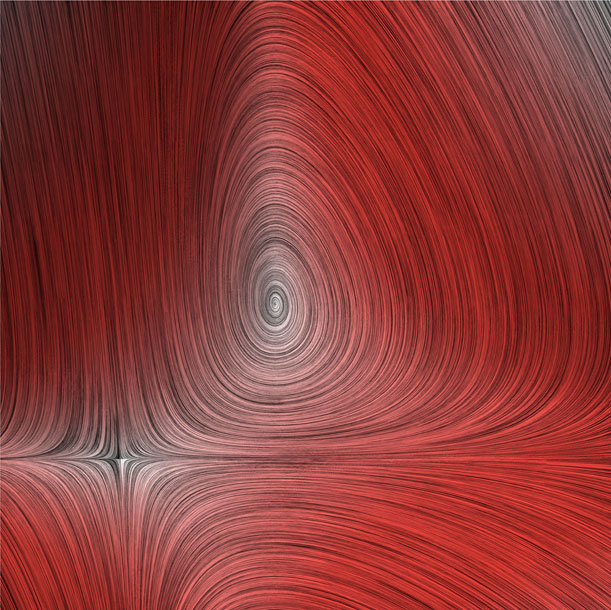
Light Eddies, by Mitchell A. Nahmias and Paul R. Prucnal, Department of Electrical Engineering. This is a computer model of a laser that is designed to act like a neuron. Courtesy of the Princeton University Art of Science Competition.
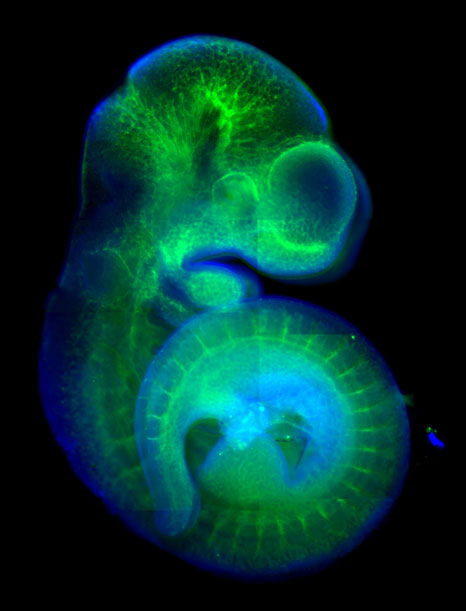
Baby Mouse, by Celeste Nelson and Joe Tien, Department of Chemical and Biological Engineering. The vascular system of a baby mouse is shown here, in green, thanks to confocal imaging, which highlights the animal’s body with fluorescent light. Courtesy of the Princeton University Art of Science Competition.
/https://tf-cmsv2-smithsonianmag-media.s3.amazonaws.com/accounts/headshot/megan.png)
/https://tf-cmsv2-smithsonianmag-media.s3.amazonaws.com/accounts/headshot/megan.png)